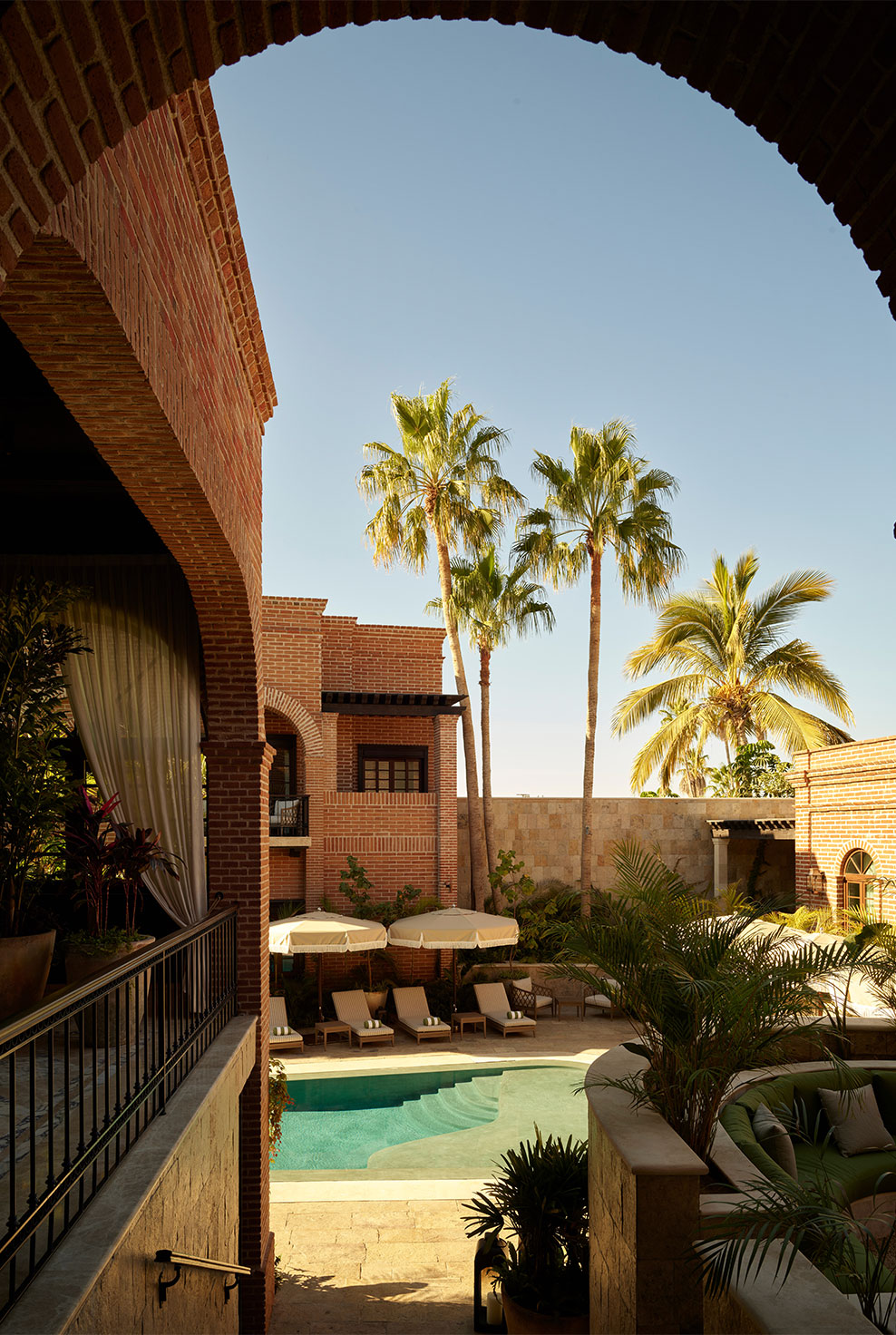THE ART OF LUXURY ACCOMMODATION
Nestled in the heart of the old town, Todos Santos Boutique Hotel is a hidden gem that redefines the art of luxury accommodation.
This intimate ten-key boutique hotel is a true testament to meticulous craftsmanship, with everything designed with super-fine attention to detail. Stepping inside feels like stepping into a vibrant canvas, thanks to the hand-painted murals that adorn the walls, each telling a story of its own. What makes this place even more enchanting is its rich history; once owned by a Spanish countess, it exudes a timeless charm that's impossible to resist.
THE HISTORY OF TODOS SANTOS
Like all conquest stories, ours begins with the promise of riches.
It was the time of new discoveries, and in Europe, there were rumors that the region of Baja California was abundant in water and vegetation. When Hernán Cortés arrived there in 1535, however, he was surprised to see indigenous peoples hunting in the midst of an arid and desert-like environment.
For the Pericúes and Guaycuras, native peoples of the region, alternating periods of drought and rain were simple facts of life. But these conditions posed a real obstacle for the conquerors, so much so that it wasn't until 1697, with the founding of Our Lady of Loreto, that California was colonized by the Jesuit order.
The missions of Baja California flourished and spread northward to the extreme of California, including the founding of Todos Santos in 1724. Initially, life in these settlements was tough but efficient. The locals, who were converted to Catholicism, shared their knowledge of the region with the Jesuits and supported the cultivation of fruits and sugar cane to survive.
With much discipline and hardship, the Jesuits established trade lines with miners and traders from the neighboring states of Sonora and Sinaloa, exchanging their agricultural products for fabrics, raw materials, and the necessary provisions to subsist."
Many years later, around 1890, the scene had changed and then, a thriving little town came to be where the house where our hotel stands was built. Rich in its history, it now continues with a new chapter.
For the Pericúes and Guaycuras, native peoples of the region, alternating periods of drought and rain were simple facts of life. But these conditions posed a real obstacle for the conquerors, so much so that it wasn't until 1697, with the founding of Our Lady of Loreto, that California was colonized by the Jesuit order.
The missions of Baja California flourished and spread northward to the extreme of California, including the founding of Todos Santos in 1724. Initially, life in these settlements was tough but efficient. The locals, who were converted to Catholicism, shared their knowledge of the region with the Jesuits and supported the cultivation of fruits and sugar cane to survive.
With much discipline and hardship, the Jesuits established trade lines with miners and traders from the neighboring states of Sonora and Sinaloa, exchanging their agricultural products for fabrics, raw materials, and the necessary provisions to subsist."
Many years later, around 1890, the scene had changed and then, a thriving little town came to be where the house where our hotel stands was built. Rich in its history, it now continues with a new chapter.














